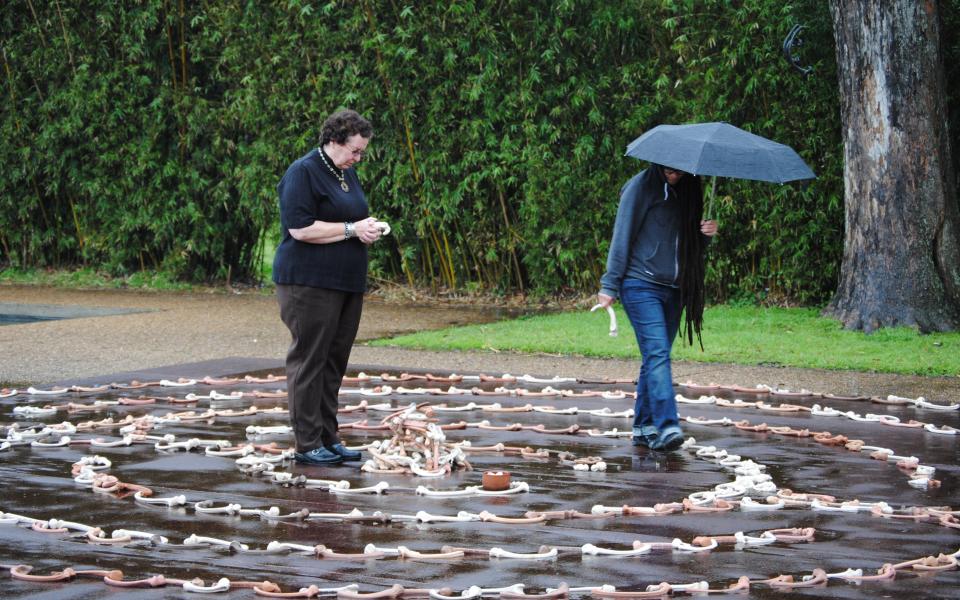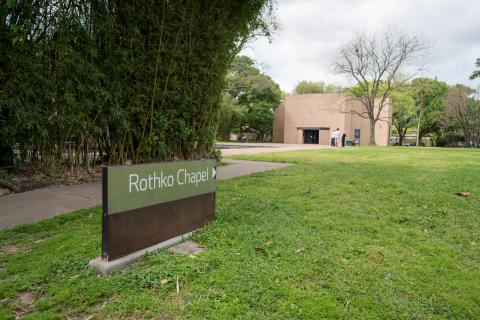
About 60 people walked a labyrinth made of ceramic bones to mark International Women's Day. Photo Credit: Alison Pruitt
About 60 people walked a labyrinth made of ceramic bones to mark International Women's Day. Photo Credit: Alison Pruitt
You don't often hear an event planner say they're thankful it rained the day of their outdoor event.
But that's what happened in Houston, Texas on March 8 as people walked a labyrinth shaped from bent, broken and mended ceramic bones.The sky was gray, the air chilly and raindrops falling.

"I think if it would've been sunny, it wouldn't have had the same effect," said Michelle Ashton, Rothko Chapel's Public Programs Director. "It was kind of perfect."
Artist Jo Zider designed and installed the labyrinth at part of Rothko Chapel's celebration of International Women's Day and Women's History Month. Rothko Chapel is a United Religions Initiative Cooperation Circle.
"Bones should be straight but all these bones are curved and the idea is that all of these bones have been broken," said Ashton. "The artists makes these bones out of ceramic and then deliberately bends them to symbolize abuse or pressure."
Zider also writes "I am the silence" on each of the bones in a different languages, evoking thoughtful contemplation from the exhibit's participants.
"What does it mean to have a broken bone? What does [I am the silence] mean?," Ashton asked herself silently as she walked.
The approximately 60 people who participated in the labyrinth during it's 9-hour exhibition were also invited to take a bone that has been intentionally broken and mended and put a name on it. Some people wrote the names of family members who may have been victims of abuse, others wrote people who may have been a source of strength for them. And then, they carried that mended bone with them -- and left it in the center.
 "With labyrinths, you walk in with something you're thinking and then you release it in the center," said Ashton. "The idea here was that you walked out with healing."
"With labyrinths, you walk in with something you're thinking and then you release it in the center," said Ashton. "The idea here was that you walked out with healing."
At Rothko Chapel that Sunday, healing was more than just an idea. There were women who experienced abuse and found the labyrinth a powerful tool for healing, sharing their stories with the artist.
"If that happens just for one person it's worth it," said Ashton. "But we heard multiple stories like that."
Click here to view more photos.

